Recovery for most threatened Australian mammal species is rarely about just rebuilding numbers. It’s also about reclaiming the range they formerly occupied. And that’s more true for the numbat – Western Australia’s faunal emblem – than for most species.
Indigenous knowledge and other evidence indicate that before European colonisation, the numbat was found across a truly huge area of arid and semi-arid woodland habitat, with probably extensive populations in WA, South Australia, New South Wales, Victoria, and the Northern Territory. By 1985, however, just two tiny and isolated remnant populations of the species were known to remain, at Dryandra and Perup in south-western WA. Although habitat loss has had an impact, it’s predation by feral species that has been the main cause of the decline: the species has been decimated by foxes and cats.
Twice last century, surviving numbers of numbats in the wild dropped so low – to less than a few hundred – that the species teetered very close to the edge of extinction. But now, although the species’ total population size is still a fraction of what it used to be, it’s slowly increasing, and feral predator control has been the overwhelming reason for the success. Significantly, the recovery of the numbat population has been a highlight of what is possible with the protection provided by predator-proof fences surrounding the huge sanctuaries operated by conservation charity Australian Wildlife Conservancy (AWC).
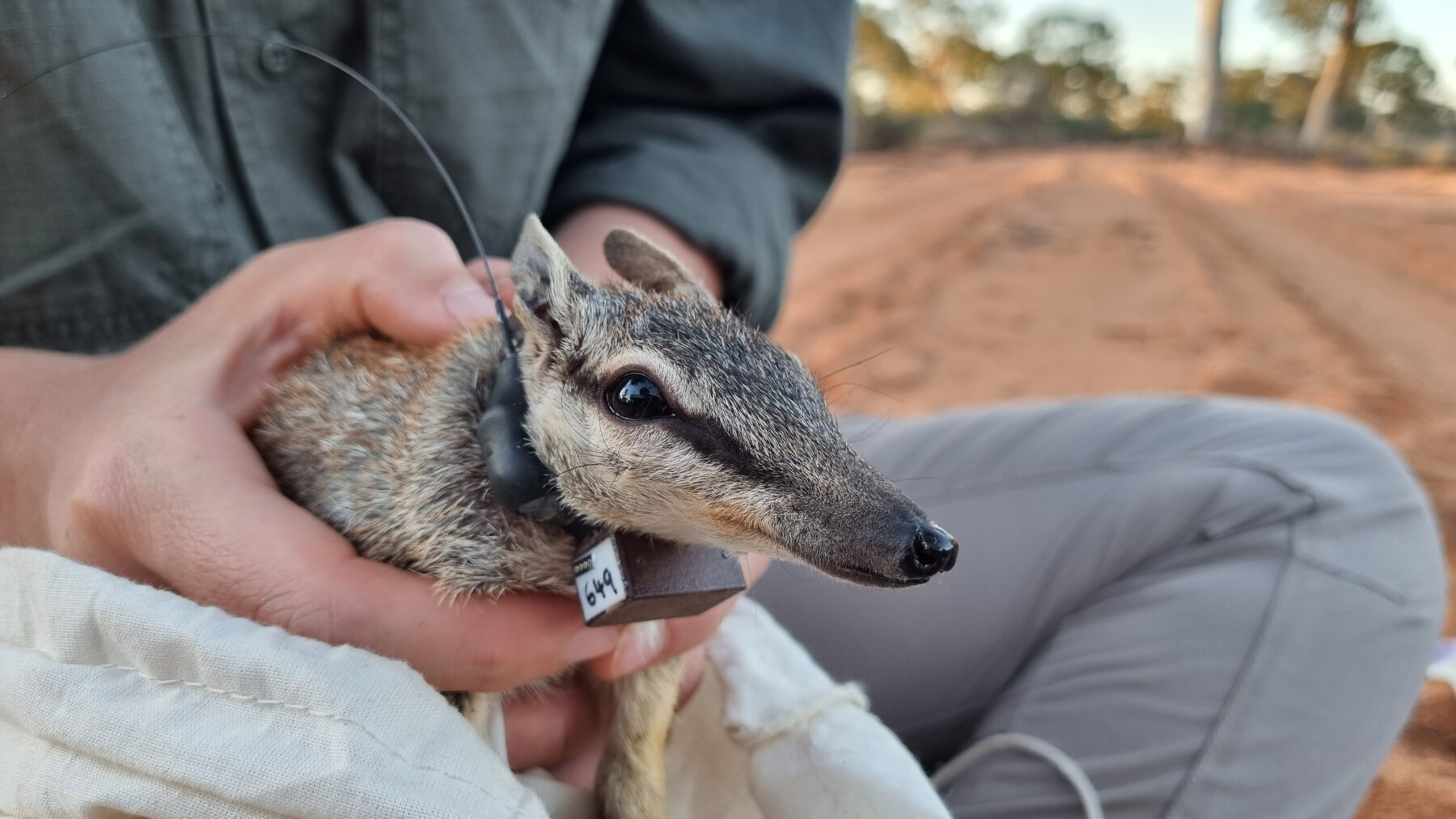
Numbats have been a feature of the AWC’s species recovery operations since the organisation’s early days. In 2002, when it acquired the property Yookamurra, in SA, and Scotia, in NSW, both sites had small numbat populations protected by predator-proof fences. Since then, the fences have grown and so too have the numbat populations at those properties. In fact, Scotia’s numbat numbers have been so healthy that in 2016–22 the property provided 73 animals to create or supplement populations at other AWC properties. These include the huge 1305sq.km Mt Gibson, north-east of Perth, that received 20 animals in 2016–18, and Mallee Cliffs National Park, in NSW, where in 2020–21 AWC released 30 numbats into a 9500ha fenced area – Australia’s biggest feral-free enclosure. Mallee Cliffs is managed in a joint partnership between AWC and the NSW National Parks and Wildlife Service.
“We’ve been able to continue to expand the number of reserves that numbats are at, as well as the number of populations and the extent of those populations,” explains Dr Jennifer Pierson, the senior ecologist with AWC’s national science team. “So [the species has] been spread across more of its former distribution, and that’s really critical to recovering the species.”
A unique marsupial
One of the first of many unusual things about the numbat is that it comes out into the open during the day: it’s one of very few strictly diurnal – day-active – native Australian mammal species. Most are either nocturnal or, in a lifestyle described as “crepuscular”, they venture out only in the dim light of dawn or dusk. It’s highly unusual to see small Aussie marsupials venture out in the open during daylight hours as the numbat does.

That’s because its behaviour is closely tied to the activity of termites, on which it feeds almost exclusively. As the day warms up, termites will move from underground nests to travel along “termite highways” near the soil’s surface, and that’s when numbats emerge from the safety of overnight dens and sleeping chambers to feed.
The numbat’s appearance and behaviour also set it apart. No other Australian marsupial looks like or could be mistaken for a numbat. It’s a stunning-looking mammal – red-grey fur with black and white bands, a long bushy tail and pointy ears. Those stripes are a form of camouflage known as disruptive colouration. They can make it stand out when it’s motionless, but, in the same way a zebra’s stripes incongruously equip it with an effective way of hiding on the African savannah, when a numbat moves, its markings can quickly make it disappear into the background.
Numbat movements are also remarkable, like those of a wind-up toy, or a figurine in a stop-go animation. Numbats’ main natural predators are birds of prey, which rely heavily on visual contact with their target when hunting. Those jerky movements displayed by numbats when they are out in the open, together with their colouration, are thought to be particularly confusing to visual predators like hawks
and falcons.
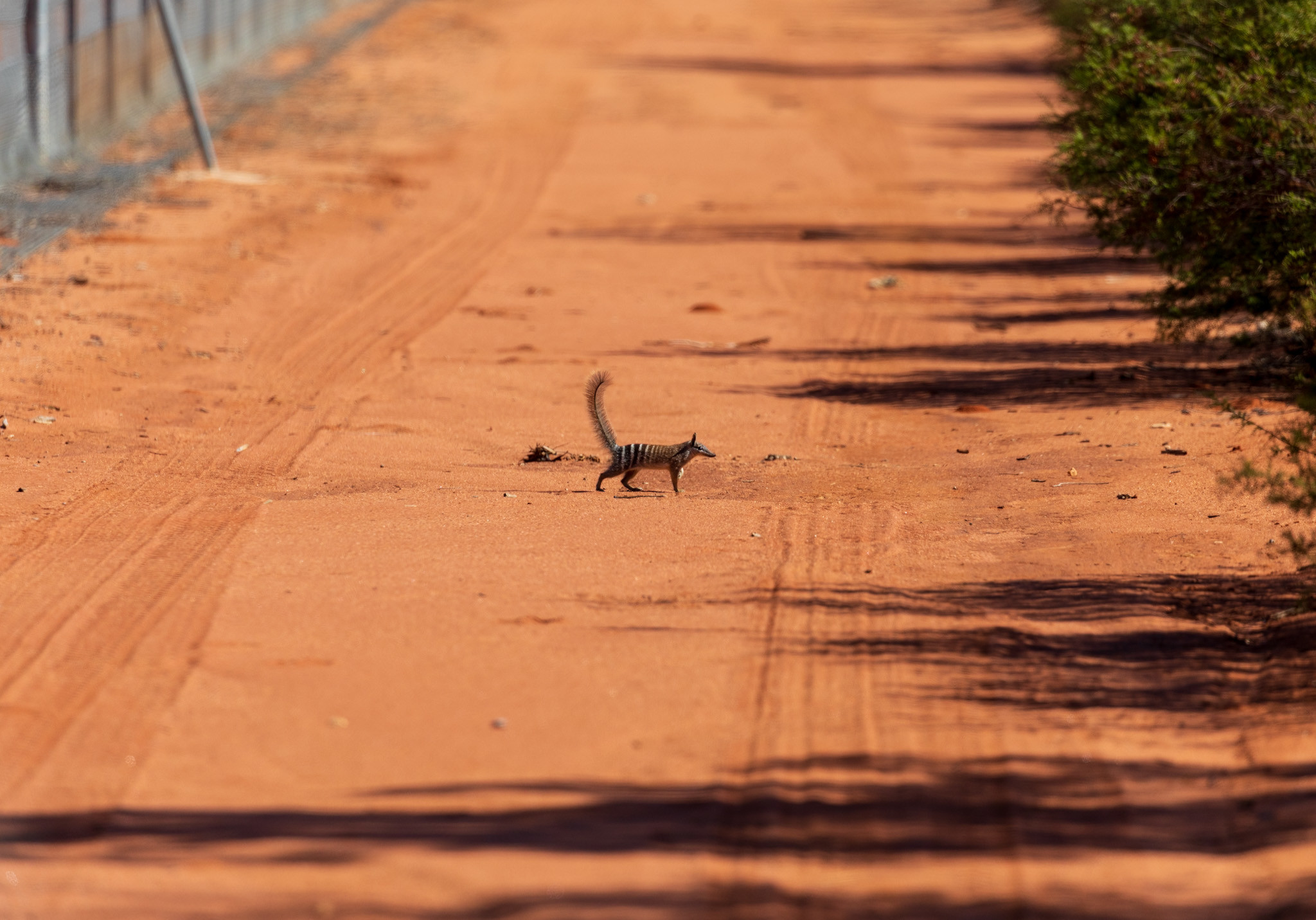
The pattern of stripes is unique to each numbat, making it possible to identify individual animals. Recent research by Sian Thorne, from the University of Western Australia, used patterns of stripes to assess the size of the species’ remnant populations in WA. AWC is trialling the method in fenced areas. Since feral predators have been brought under control in the area with baiting programs undertaken independently of AWC, those remnant populations have also been doing well – in fact, better than thought.
“In terms of the remnant pops, we thought there was less than 1000 and now we think there’s probably closer to 2000, and potentially more,” Jennifer says. There’s perhaps another 500 safely surviving on AWC properties.
Widening the management focus
While simply increasing the size and spread of the numbat population has been an AWC priority to date, the organisation is now widening its management focus. “We’re very optimistic that numbat numbers are doing really well and so the two areas we are now focusing on in terms of management are genetic management of the population and the potential impacts of climate change,” Jennifer says. The individuals at the various sites – from WA to NSW – are being managed as one large population by the various bodies involved in numbat conservation. Because all the new sub-populations originated from the two tiny remnant populations, the genetics of all groups are being monitored to ensure inbreeding doesn’t occur.
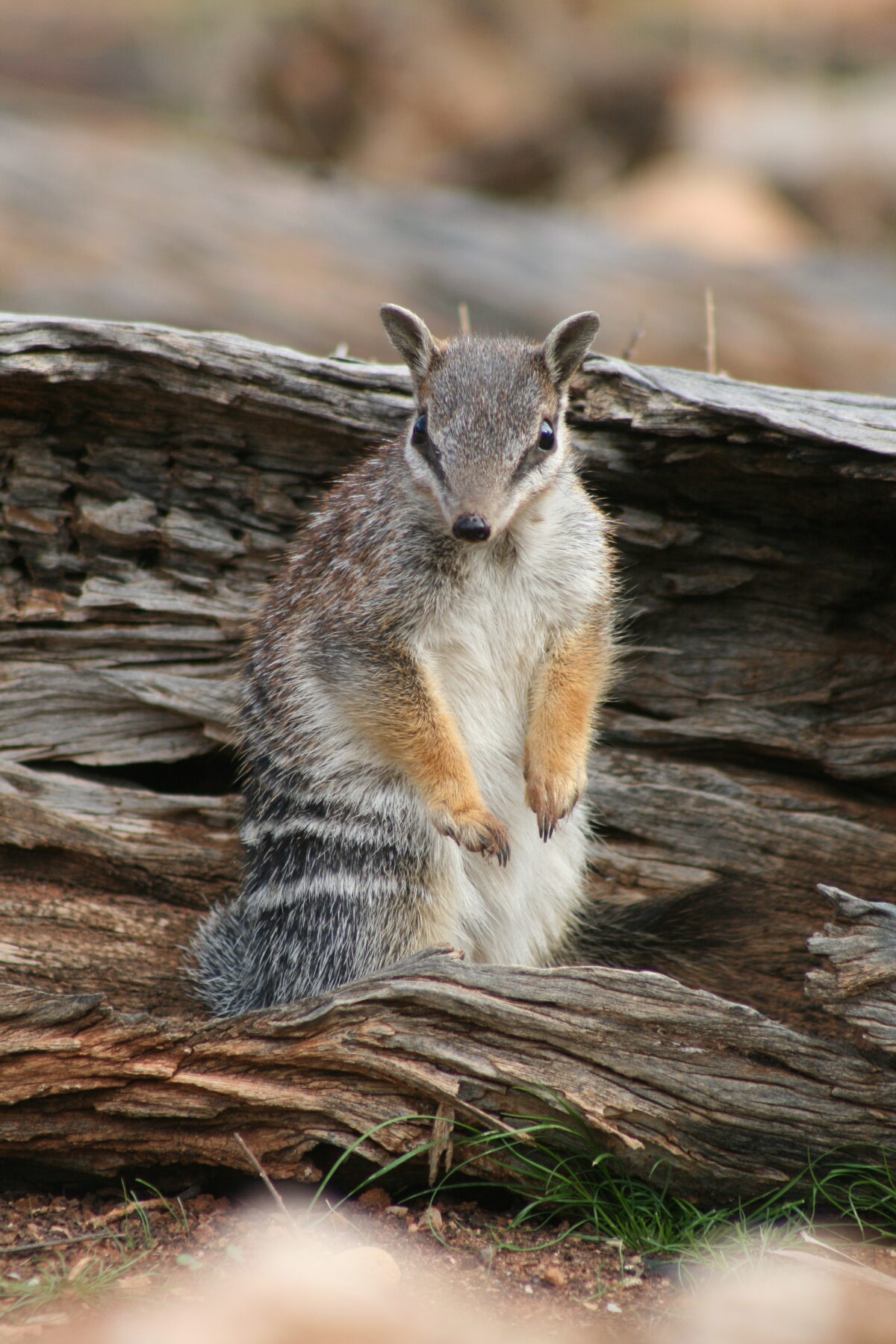
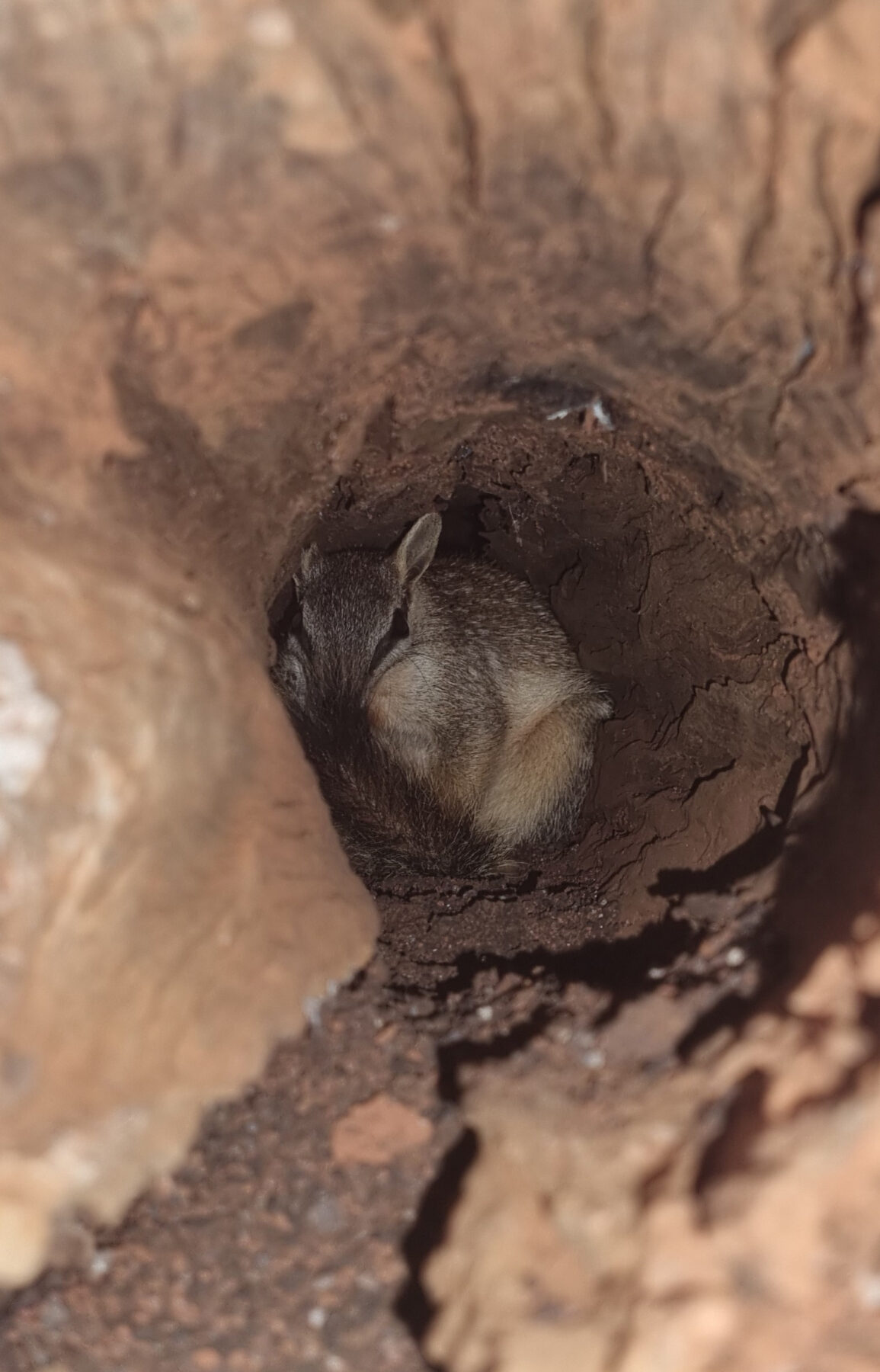
for numbats. Image credits: Alexandra Ross/AWC; Tim Henderson/AWC
“There are two things we are doing in terms of climate change, and one is – in conjunction with the genetic management – managing the population’s adaptive capacity,” Jennifer says. So establishing populations across the species’ former range will ensure individuals are exposed to a variety of conditions. In that way, natural selection will keep strong the species’ adaptive capacity – which is its ability to respond to changing environmental conditions.
But AWC has also just begun a large study looking at the “activity budgets” of numbats under different thermal conditions, which will show how numbats cope in drier and hotter conditions.
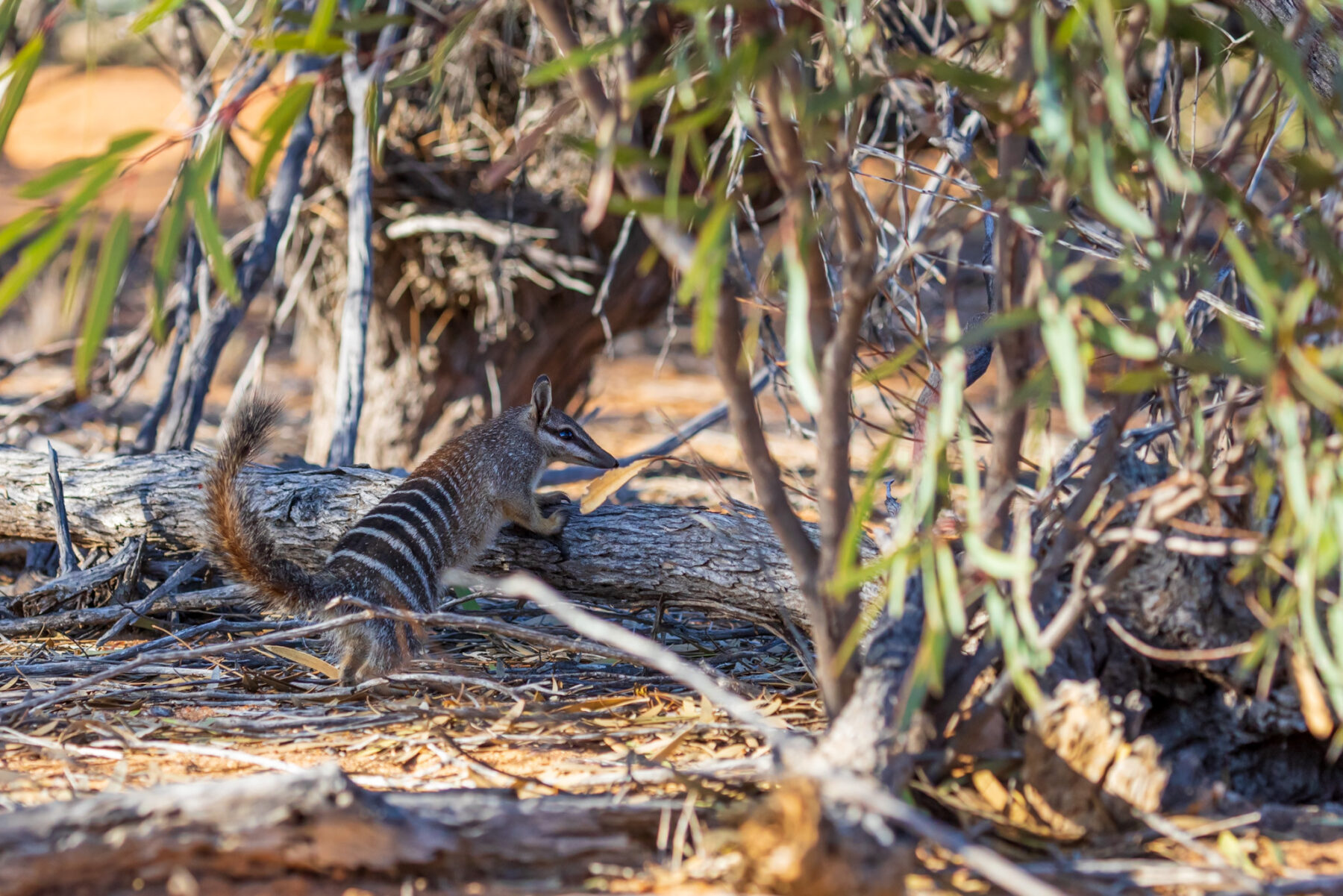
“We did a very big project this year at Mt Gibson, where we put high-tech collars on individuals so we could track their activity,” Jennifer says, explaining that multiple sensors on the collars revealed how and where an animal was moving around the environment. These data will indicate whether an animal can still forage enough when it’s hot to ensure it gets its necessary quota of termites.
“We got lucky, in a way – Mt Gibson had some incredible heatwaves this summer,” Jennifer says. “So we have an extraordinary amount of data under extreme heat conditions, tracking these animals through the season to see how they changed their activity budgets.”
The results will help scientists understand if and how they’ll need to alter their management as the effects of climate change continue to hit.
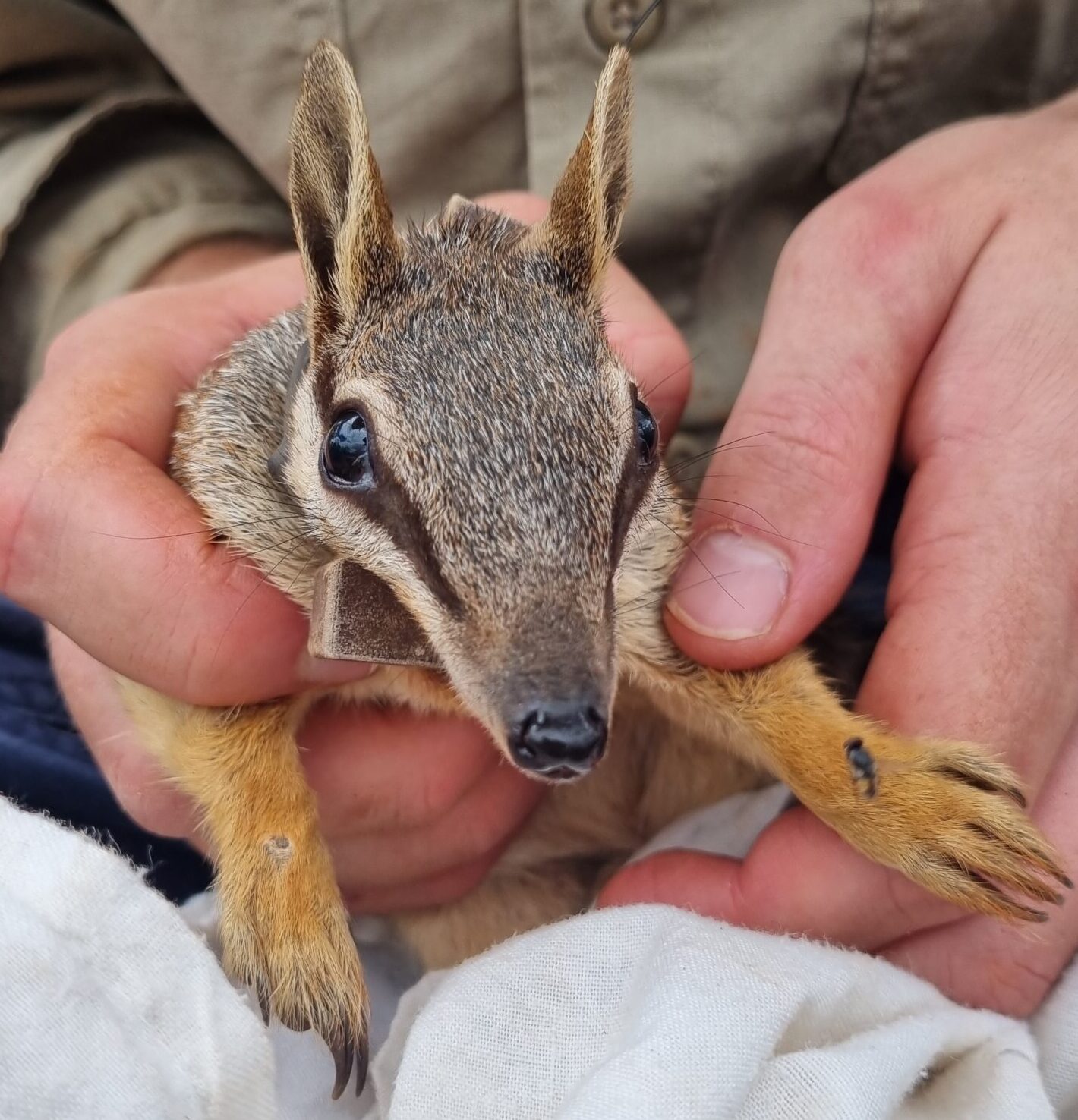
Help us help numbats
You can help AWC’s efforts to keep this beautiful little creature as a critical part of the Australian landscape by contributing funds to our Australia’s Most Endangered campaign.




